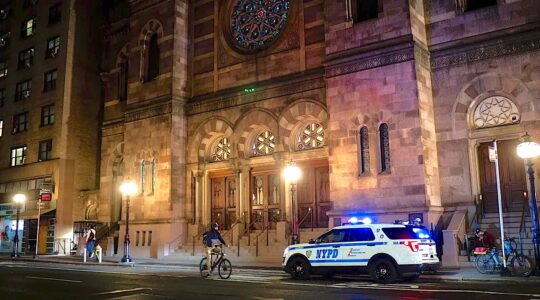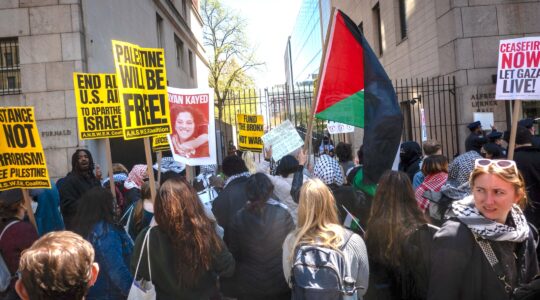Just a few hours’ drive east from Venice, one of the most-visited places in Europe, lies a magical land that few Americans ever consider: Slovenia.
While Europeans have discovered Slovenia in droves, there are reasons for its obscurity among us Yanks. Slovenia’s capital, Ljubljana, is hard to pronounce — Lyoo-blee-YAH-na — and impossible to spell. Many of us secretly sympathized with President Bush when he confused Slovenia with Slovakia, another country that didn’t exist when most of us learned geography.
Its very newness means that Slovenia has no enticing image, like Venice’s canals or Norway’s fjords, to inspire wanderlust. So let me give you a few: Fairy-tale castles tucked amid snow-capped mountains and lush green forests. The brilliant sunshine of Mediterranean Europe and the landscape of Switzerland. Red-roofed villages with ancient Jewish cemeteries. Elegant 19th-century boulevards, medieval clock towers and lively squares filled with university students.
For sound effects, how about the clinking sound of extra euros in your pocket? Travel here is still quite a bit cheaper than Austria or Switzerland, the countries Slovenia most closely resembles.
Born out of the disintegration of Yugoslavia in the early 1990s, Slovenia is the wealthiest and most Western-feeling corner of that erstwhile Slavic confederation, the only ex-republic to join both the European Union and the euro currency. Slovenia’s tiny size — visitors outnumbered the two million locals last year — has contributed to its enticing cultural mix: Italian-influenced cuisine, a Slavic language written in Latin characters (though Italian and English are also widely understood), and stunning Central-European architecture, courtesy of longtime Hapsburg rule.
About 500 Ashkenazic and Sephardic Jews are estimated to live here, mostly in the capital, though fewer than 200 are affiliated with the synagogue. Still, that affiliation is a victory in itself: locals told me how Ljubljana was for many years the only European capital without a Jewish place of worship, until a new synagogue was dedicated in 2003. Only a few years earlier, Slovenia welcomed its first chief rabbi since the Holocaust.
A tentative but heartening revival of Jewish culture is now underway. It was a long time coming: while Jewish life flourished throughout much of Europe right up until World War II, Slovenian Jewry last prospered in the Middle Ages. After a series of expulsions from the region, Jewish presence remained muted right up until the Holocaust, when its already-small population was largely decimated.
Today, a Holocaust monument commemorates these victims in the Jewish cemetery, which has been recently restored, along with several other Jewish sites in historic cities: Piran, Ptuj, Koper and especially Maribor. Throughout the country, you’ll notice place names like Zidovski Trg (Jewish square) and Zidovska Ulica (Jewish Street) — remnants of a Jewish medieval past.
Ljulbljana is the obvious place to start, though by no means should you confine your Slovenian adventure here; there are too many lovely, historic towns to discover, all within an easy drive or train ride. The capital, a university town, is small and compact yet cosmopolitan and vibrant, bubbling with jazz music, beer gardens, and art-filled cafes along the pretty Ljubljanica River. The medieval Jewish ghetto is still discernable in local street names like Zidovska Steza (Jewish Path), though stylish boutiques now stand where once Jewish merchants presided.
All summer long, Ljubljana celebrates the good life with the Ljubljana Summer Festival. Held at picturesque venues around the capital, it features performances by the Slovenian Philharmonic, art exhibits and poetry nights at Ljubljana Castle, and evening cinema under the stars.
A two-hour daytrip away near the Austrian border, the lively college town of Maribor ranks just as high as Ljubljana for historical and Jewish interest. Surrounded by lush vineyards, Maribor lies at the foot of a mountain on the River Drava. The gorgeous Baroque buildings are straight out of a fairy tale; along a waterfront promenade, sailboats glide by. Much of the historic center is given over to pedestrian-only streets, where outdoor markets beckon with handmade linens, glass jewelry and tasty local wines.
A steep climb to the top of the cathedral tower rewards panting visitors with spectacular views over red-tile roofs, mountain scenery and the winding Drava. Nearby is the Jewish quarter, in the heart of the city’s oldest district. The medieval synagogue, a modest white structure that is perhaps Slovenia’s most compelling Jewish site, once stood at the center of a thriving Jewish community, surrounded by the “Jewish Tower,” a mikveh, and a school. After centuries of neglect, it underwent a long renovation before opening as a Jewish heritage museum and cultural center in 2001. Today, one can see the tombstone of a prominent medieval rabbi, along with Hebrew artifacts and photographs at the regional museum.
Support the New York Jewish Week
Our nonprofit newsroom depends on readers like you. Make a donation now to support independent Jewish journalism in New York.
A Jewish presence whispers throughout the northeast region. In nearby Murska Sobota, a Holocaust memorial was officially dedicated earlier this year, commemorating the liquidation of the region’s small but tight-knit Jewish community. More picturesque, though, is Slovenia’s oldest town, just a few miles down the Drava from Maribor: Ptuj — pronounced “p-TOO-ee.”
Crowned by a medieval castle, Ptuj is a European fantasy of cobblestone lanes, ancient Roman walls and pastel, tiled-roofed buildings. Seven centuries ago the street now known as Jadranska was called “Judengasse” (Jewish Street) for its Jewish moneylenders and synagogue. Today, the chief Jewish sight is a circa-1300 tombstone in the town museum.
Slovenia’s Adriatic coastline is tiny but lovely, well worth a detour in summertime. The best bets are Koper and Piran — historic port towns with a strong Italian feel, ancient Jewish ghettos, and idyllic seaside settings without the Croatian crowds.
The New York Jewish Week brings you the stories behind the headlines, keeping you connected to Jewish life in New York. Help sustain the reporting you trust by donating today.




